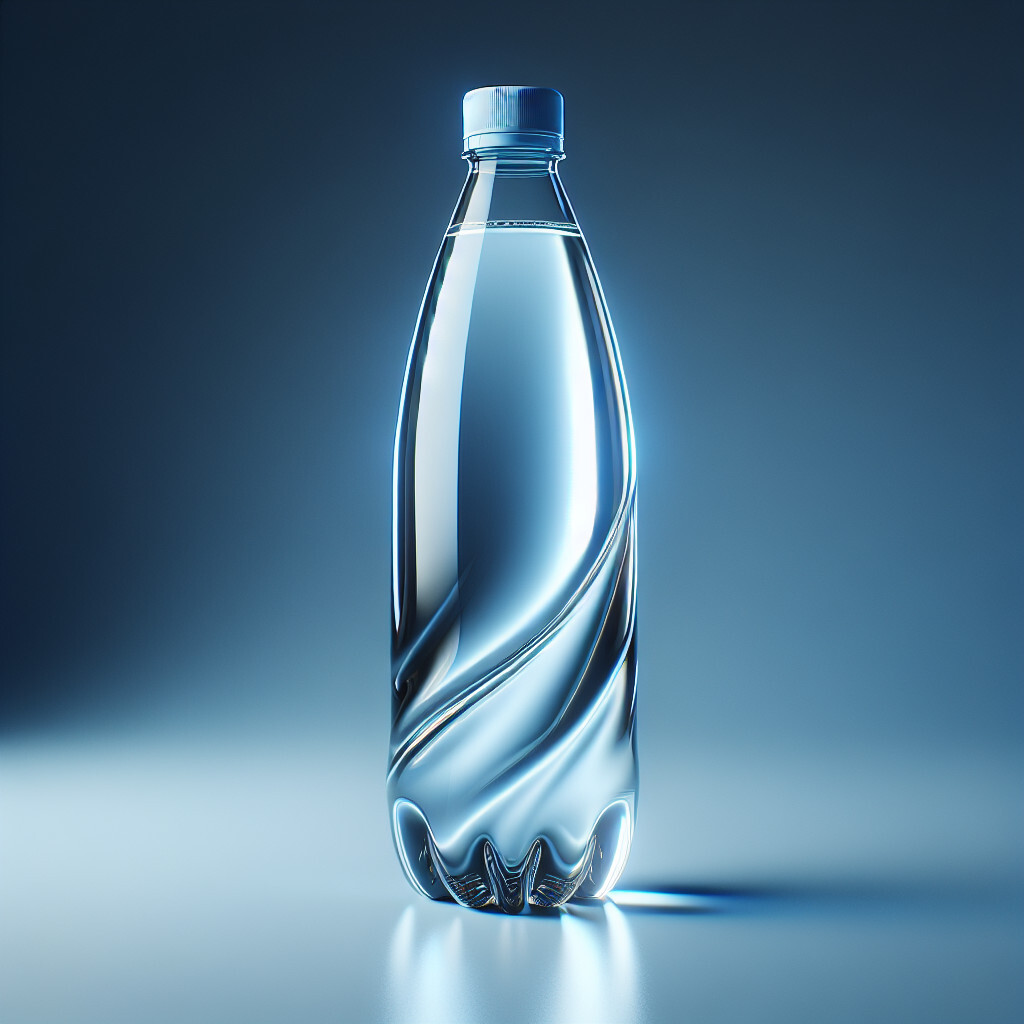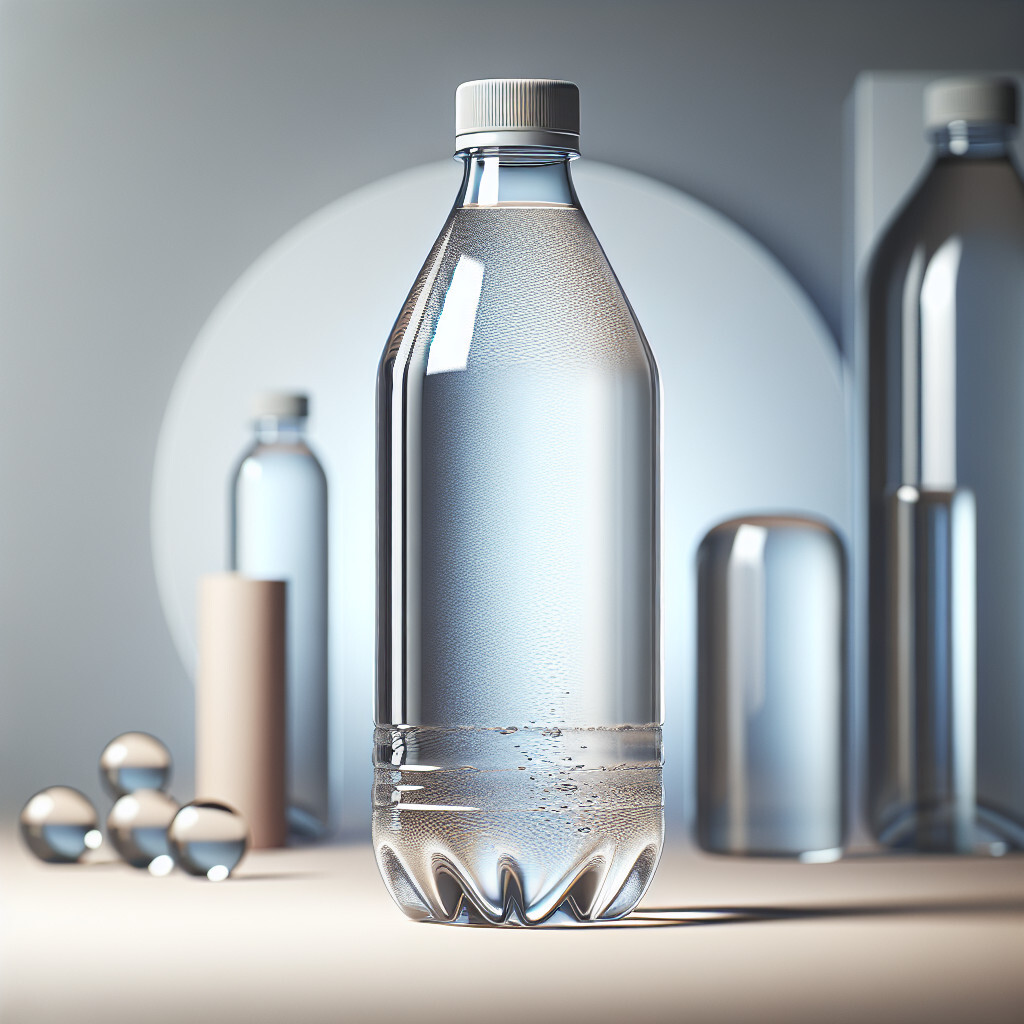-
Table of Contents
“Experience Hydration in a New Dimension with our Mineral Water 3D Model.”
Introduction

A mineral water 3D model is a digital representation that visually depicts a bottle of mineral water in three dimensions. This model is designed using computer graphics software and can be used for various purposes such as product design, advertising, or virtual reality. It provides a realistic view of the product, including details such as the shape of the bottle, the label design, and even the water inside, if the bottle is depicted as transparent. The 3D model can be rotated and viewed from different angles, offering a comprehensive understanding of the product’s physical attributes.
Exploring the Creation of Mineral Water 3D Models
The advent of 3D modeling has revolutionized various industries, from architecture to healthcare, and even the food and beverage sector. One intriguing application of this technology is the creation of mineral water 3D models. This process involves the use of sophisticated software to create a three-dimensional representation of a bottle of mineral water, which can be used for a variety of purposes, such as product design, marketing, and even quality control.
The creation of a mineral water 3D model begins with the conceptualization of the design. This involves determining the shape, size, and other physical attributes of the bottle. The designer must also consider the label design, which includes the brand name, logo, and other relevant information. This stage requires a great deal of creativity and precision, as the model must accurately represent the actual product.
Once the design has been conceptualized, the next step is the actual modeling process. This is where the designer uses 3D modeling software to bring the design to life. The software allows the designer to create a virtual 3D model of the bottle, complete with all its physical attributes. This process involves a series of steps, including creating a wireframe model, adding textures and colors, and rendering the model to create a realistic representation.
The creation of a mineral water 3D model is not just about aesthetics. It also has practical applications. For instance, it can be used in the product development process to test different design concepts before the actual production. This can save companies a significant amount of time and money, as they can identify and address any design issues early in the process.
Moreover, a mineral water 3D model can also be used in marketing and advertising. It can be used to create realistic product images for print and digital advertising, product catalogs, and even interactive product demonstrations. This can help companies to effectively showcase their products and attract potential customers.
Quality control is another important application of mineral water 3D models. By comparing the 3D model with the actual product, companies can ensure that the product meets the design specifications and quality standards. This can help to prevent any product defects and ensure customer satisfaction.
In conclusion, the creation of mineral water 3D models is a complex process that involves a combination of creativity, precision, and technical skills. However, the benefits that it offers make it a worthwhile investment. Not only does it enhance the product design and development process, but it also plays a crucial role in marketing, advertising, and quality control. As 3D modeling technology continues to evolve, it is expected that its application in the food and beverage industry, including the creation of mineral water 3D models, will continue to grow.
The Role of Mineral Water 3D Models in Education
Mineral water, a vital resource for human survival, has been the subject of numerous scientific studies and educational programs. Its importance in maintaining human health and its role in various biological processes make it a crucial topic of study. In recent years, the use of 3D models in education has revolutionized the way complex concepts and processes are taught and understood. One such application is the mineral water 3D model, a tool that has significantly enhanced the teaching and learning of the properties, composition, and benefits of mineral water.
The mineral water 3D model is a digital representation of the molecular structure of mineral water. It provides a detailed and accurate visualization of the water molecule and the various minerals it contains. This model allows students to interact with the structure, enabling them to gain a deeper understanding of the composition of mineral water. It also helps to demystify the complex chemical processes involved in the formation of mineral water, making it easier for students to grasp these concepts.
The use of 3D models in education has been shown to improve students’ comprehension and retention of complex scientific concepts. The mineral water 3D model, for instance, allows students to visualize and interact with the molecular structure of mineral water, which can be difficult to understand through traditional 2D diagrams and text descriptions. By manipulating the 3D model, students can see how the water molecule and the minerals interact with each other, providing a more intuitive understanding of these processes.
Moreover, the mineral water 3D model can also be used to demonstrate the health benefits of mineral water. By showing the interaction between the minerals in the water and the human body at a molecular level, students can better understand how mineral water contributes to health and wellbeing. This can be particularly useful in health and nutrition education, where understanding the role of different minerals in the body is crucial.
In addition to its educational benefits, the mineral water 3D model also has potential applications in research. Scientists can use the model to simulate and study the behavior of mineral water under different conditions, which can provide valuable insights into its properties and potential uses. For example, researchers can use the model to study the effects of temperature and pressure on the solubility of minerals in water, or to investigate the potential health benefits of different mineral compositions.
In conclusion, the mineral water 3D model is a powerful tool for education and research. It provides a detailed and interactive representation of the molecular structure of mineral water, making complex concepts and processes more accessible and understandable. By enabling students to visualize and interact with the structure of mineral water, it enhances their comprehension and retention of these concepts. Furthermore, it allows scientists to simulate and study the behavior of mineral water under different conditions, providing valuable insights into its properties and potential uses. As technology continues to advance, the use of 3D models in education and research is likely to become even more widespread, further enhancing our understanding of the world around us.
Innovative Techniques in Designing Mineral Water 3D Models
The advent of 3D modeling has revolutionized the way we visualize and understand objects, including everyday items such as mineral water bottles. This innovative technique has been instrumental in designing mineral water 3D models, providing a realistic representation of the product that can be viewed from all angles. This article delves into the fascinating world of 3D modeling and its application in creating mineral water models.
3D modeling is a technique in computer graphics where a three-dimensional object is created using specialized software. The process involves the creation of a mathematical representation of the surface of an object, which can then be manipulated as desired. This technique has found widespread application in various fields, including product design, architecture, and animation.
In the context of mineral water 3D models, this technique allows designers to create a realistic representation of the bottle, complete with its unique shape, label design, and even the water inside. This is particularly useful for marketing and advertising purposes, as it allows potential customers to visualize the product in a realistic manner.
The process of creating a mineral water 3D model begins with the creation of a basic shape, which is then refined to match the exact dimensions of the bottle. This is followed by the addition of details such as the bottle cap, label, and even the texture of the bottle itself. The model is then rendered, which involves the application of lighting and shading to give it a realistic appearance.
One of the key advantages of using 3D modeling for mineral water bottles is the ability to make changes easily. For instance, if the design of the bottle or the label needs to be changed, this can be done quickly and easily without having to create a new model from scratch. This flexibility makes 3D modeling a cost-effective solution for product design.
Moreover, 3D models of mineral water bottles can also be used for virtual reality (VR) and augmented reality (AR) applications. For instance, a customer could use a VR headset to view the bottle from all angles, or an AR app could overlay the 3D model onto the real world, allowing the customer to see how the bottle would look in different environments.
In addition to these practical applications, 3D modeling of mineral water bottles also has an aesthetic appeal. The level of detail that can be achieved with this technique is truly remarkable, from the tiny bubbles in the water to the subtle reflections on the surface of the bottle. This makes the 3D model not just a tool for product design, but also a work of art in its own right.
In conclusion, the innovative technique of 3D modeling has significantly enhanced the process of designing mineral water bottles. It provides a realistic representation of the product, allows for easy changes, and has potential applications in VR and AR. As technology continues to advance, we can expect to see even more exciting developments in this field.
The Impact of Mineral Water 3D Models on Advertising Strategies
Mineral water, a vital commodity in today’s health-conscious society, has seen a significant surge in demand over the past few years. This increase in demand has led to a corresponding rise in competition among mineral water brands, each vying for a larger share of the market. To stand out in this crowded marketplace, brands are continually seeking innovative ways to advertise their products. One such innovation that has proven to be a game-changer in the advertising industry is the use of 3D models, particularly in the case of mineral water.
The advent of 3D modeling technology has revolutionized the way products are presented in advertisements. This technology allows for the creation of realistic, three-dimensional representations of products, which can be manipulated and viewed from all angles. For mineral water brands, this means the ability to showcase their product in a way that is both visually appealing and informative.
The use of mineral water 3D models in advertising strategies has several significant benefits. Firstly, it allows for a more detailed and accurate representation of the product. Traditional 2D images can only provide a limited view of a product, whereas 3D models can show every aspect of the product, including the shape of the bottle, the label design, and even the texture of the cap. This level of detail can help to create a more immersive and engaging experience for the viewer, which can in turn lead to increased interest and sales.
Secondly, 3D models can be used to create more dynamic and interactive advertisements. For example, a 3D model of a mineral water bottle can be animated to show the bottle being opened and the water being poured. This can help to create a more realistic and relatable depiction of the product, which can be particularly effective in digital advertising campaigns.
Furthermore, the use of 3D models can also help to enhance the brand image. A well-designed and realistic 3D model can convey a sense of quality and professionalism, which can help to build trust and credibility with consumers. This can be particularly beneficial for new or lesser-known brands, as it can help to establish them as serious contenders in the market.
However, it’s important to note that the effectiveness of a 3D model in an advertising campaign largely depends on the quality of the model itself. A poorly designed or unrealistic model can have the opposite effect, detracting from the overall appeal of the product and potentially damaging the brand image. Therefore, it’s crucial for brands to invest in high-quality 3D modeling services to ensure the best possible results.
In conclusion, the use of mineral water 3D models in advertising strategies has the potential to significantly enhance the effectiveness of these campaigns. By providing a more detailed and realistic representation of the product, creating more dynamic and interactive advertisements, and enhancing the brand image, 3D models can help mineral water brands to stand out in a crowded market and attract more consumers. However, the quality of the 3D model is key, and brands should therefore ensure they invest in high-quality 3D modeling services.
Q&A
1. Question: What is a mineral water 3d model?
Answer: A mineral water 3D model is a digital representation of a bottle of mineral water, created using 3D modeling software. It can be used in animations, games, and simulations.
2. Question: How is a mineral water 3d model created?
Answer: A mineral water 3D model is created using 3D modeling software like Blender, 3DS Max, or Maya. The process involves creating a mesh, adding textures, and applying lighting and shading effects to make the model look realistic.
3. Question: What are the uses of a mineral water 3d model?
Answer: A mineral water 3D model can be used in various fields such as advertising, video game design, animation, and virtual reality. It can also be used for educational purposes to demonstrate the design and packaging of mineral water bottles.
4. Question: Can I create a mineral water 3d model if I’m a beginner in 3D modeling?
Answer: Yes, even beginners can create a mineral water 3D model. There are many tutorials available online that can guide you through the process. However, it may require patience and practice to achieve a realistic result.
Conclusion
The mineral water 3D model provides a detailed and comprehensive visual representation of the structure and composition of mineral water. It can be a useful tool for educational purposes, allowing for a better understanding of the properties and benefits of mineral water. However, the effectiveness of this model depends on its accuracy and the ability of the viewer to interpret the information correctly.






